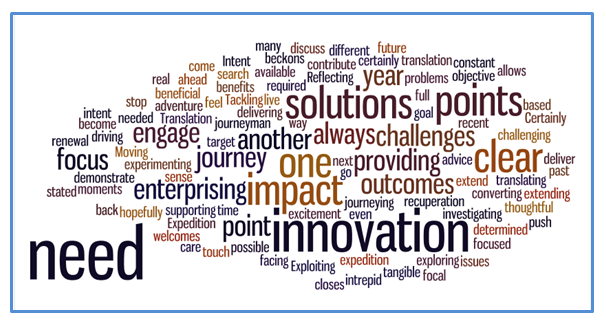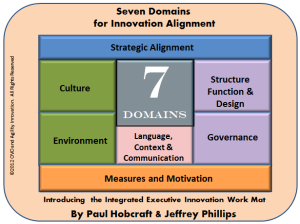Jeffrey Philips wrote recently a blog entitled “what really blocks innovation” that he has seen at executive level towards innovation when introducing the work mat approach he and I developed. He put these into four framing boxes that make up the potential barriers. I agree with all of what he says and more.
I’d like to go a little deeper with a suggested way to surface these deeper personal hidden blockages that you do find in working with innovation, that the work mat brings out. It is surprising as they often have real commonality once surfaced and then you need to find the dedicated time to allow them to be fully discussed, as they are critical to unlock.
Often in innovation adoption there are so many hidden barriers that need drawing out and resolving. Take a read of Jeffrey’s observations, as they clearly triggered my own approach of how to deal with them which I thought I’d share here.
As Jeffrey states there are “very different perspectives, different goals and even different definitions between and among members of many executive teams.” The key is to surface these.
We both totally share this point that Jeffrey raises, that “sustained innovation can only occur when there is clarity about goals, alignment within the executive team to the goals, deep commitments to appropriate staffing and resource allocation, and the willingness to lead into risky or uncertain initiatives. When these factors are present, innovation can flourish.”
To get to this point we need to draw out those real hidden concerns that inhibit innovations adoption at executive level. We need to trigger ‘collective’ discussions so the team can relate and share their concerns and offer up solutions that breaks through those barriers. Continue reading “Surfacing the challenges and road blocks to innovation.”

